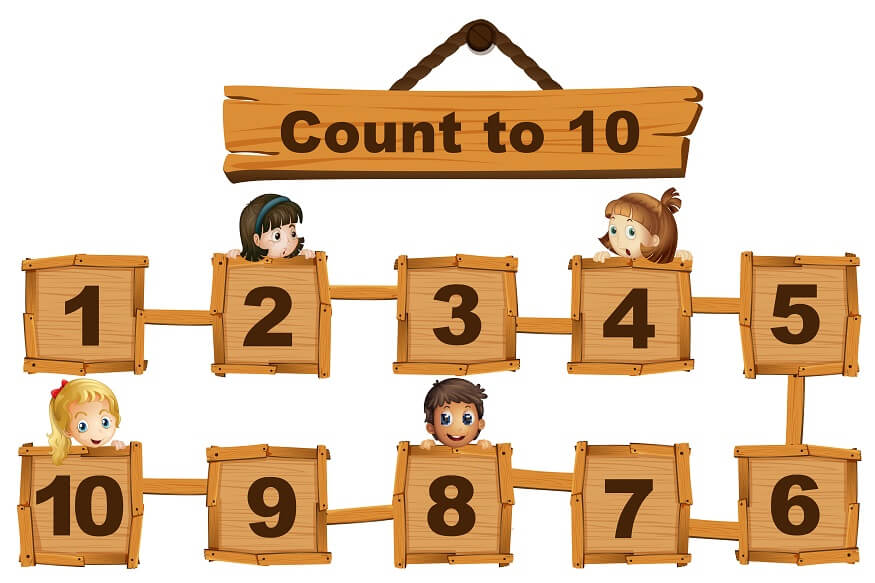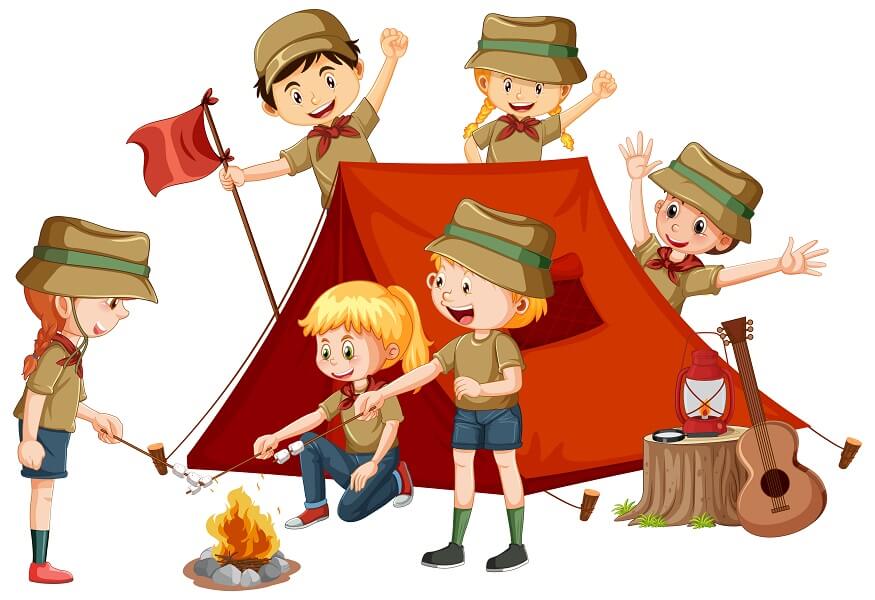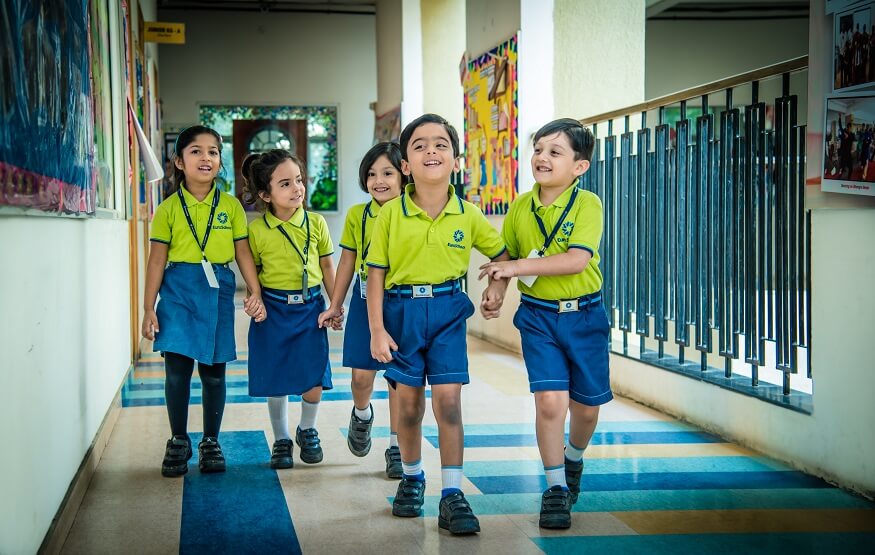One of the early things we teach children, even before they go to school, is the ABC’s and 123. Alphabets and numbers are something we make children familiar with before they get into preschool. The very idea of counting numbers helps children in many ways. They also learn to count in many ways, and that promotes mathematical skills. So, we are all familiar with counting forward, but what about counting numbers backwards? There are many concepts that are basic for kids. Children must learn backward counting 100 to 1 counting, at an early age. This makes a child’s life easy and simple just by learning backward counting 100 to 1 counting.
About two decades ago, we were only familiar with forward counting, which is very necessary for kids to learn. But today, counting numbers backwards is also a part of the academic curriculum. Could you have ever imagined that kids would have to learn to count numbers backwards? In this blog, we will learn about backward counting 100 to 1.
Importance of Backward Counting
Letting children of all ages learn to count backwards can be a very valuable skill. It aids the teaching process where kids learn to tell time and helps them to understand place value in math. Backward counting is a very simple and extremely straightforward way for children to master their number skills. About two decades ago, we were only familiar with forward counting, which is very necessary for kids to learn. But today, counting numbers backwards is also a part of the academic curriculum. Could you have ever imagined that kids would have to learn to count numbers backwards? In this blog, we will learn about backward counting 100 to 1.
Backward counting is also called reverse counting or counting back. A simple example of counting numbers backwards is when children read a book, they turn a page every time as they finish reading a page, and they learn counting forward simultaneously. But when children turns pages backwards, they learn counting numbers backwards very easily.
Examples of Backward Counting
Here are some additional backward counting example for kids: Suppose there are 12 apples, and the deer eats one at a time. It means every time one apple is reduced from the total count of apples. Each time when the deer is eating, you simply start counting numbers backwards (12, 11, 10 and so on). This will help a child to understand backward counting. Now that we understand so much about backward counting 100 to 1, let us explore details of 100 to 1 counting.
|
100 |
99 |
98 |
97 |
96 |
95 |
94 |
93 |
92 |
91 |
|
90 |
89 |
88 |
87 |
86 |
85 |
84 |
83 |
82 |
81 |
|
80 |
79 |
78 |
77 |
76 |
75 |
74 |
73 |
72 |
71 |
|
70 |
69 |
68 |
67 |
66 |
65 |
64 |
63 |
62 |
61 |
|
60 |
59 |
58 |
57 |
56 |
55 |
54 |
53 |
52 |
51 |
|
50 |
49 |
48 |
47 |
46 |
45 |
44 |
43 |
42 |
41 |
|
40 |
39 |
38 |
37 |
36 |
35 |
34 |
33 |
32 |
31 |
|
30 |
29 |
28 |
27 |
26 |
25 |
24 |
23 |
22 |
21 |
|
20 |
19 |
18 |
17 |
16 |
15 |
14 |
13 |
12 |
11 |
|
10 |
9 |
8 |
7 |
6 |
5 |
4 |
3 |
2 |
1 |
That’s is what 100 to 1 counting looks like on a textbook or on any online courses for kids.
Also Read: Best Indoor Math Games for Children
One very important aspect of teaching children how to learn backward counting is by keeping them engaged in activities that support this learning technique. Teaching kids counting numbers backwards can be tricky and may need some help, so here are some tips that you can use to teach your child backward counting.
Learning while having fun could also be a great way to bond with your child, so playing hide and seek is an excellent way to teach children about backward counting. When you ask a child to start backward counting 100 to 1 or 10 to 1, it can be a perfect idea to practice counting numbers backwards.
Hopscotch has been around for decades, as far as you can think of this game has been played by us, our parents and even grandparents, and you will be surprised to know that hopscotch is an activity played around the world. We all have learnt to count backward from our childhood, but it is now being openly practiced and given a need to be in the curriculum for children to aid their math skills and memory. So, by simply drawing marks and outlining a track on the floor and writing numbers from 1 to 10, and then asking your kid to jump from the largest to the smallest number is a great physical activity and an amazing way to learn backward counting for kids.
Children love toys, so get them something that will help them to build and count backwards. Toys like Lego and construction sets with numbers written on them will help children because they can look and learn. By building these toy figures starting from the largest number again, will teach children the importance of counting numbers backwards.
From a very young age, we teach children to play games like pass the parcel and countdowns. So, by simply taking a toy or an object like a ball or a ring and just passing it around in a circle, where you have all the children gathered, you can ask the first kid to start counting backwards while the counting goes in a descending order. So, for example, have the first kid that holds the object say 10 aloud and pass the object to the next child who will then say 9, and the next says 8, and so on (or whichever number you start the game from depending on the number of kids).
Another great way to engage children in both physical activity and learning backward counting is by playing their favorite song and having them dance while counting numbers backwards. These are some easy tips to teach children 100 to 1 counting. Just let them chant the numbers backwards with some dance and music. This will be a fun activity while learning their numbers as well.
At EuroSchool, we ensure our students learn the concept of both forward counting as well as backward counting, we keep both as a priority for children. As kids learn about counting numbers, it gets easier for them to learn about similar theories. This makes children confident in the academic curriculum. As children get confident and have good self-esteem, teaching them anything, including backward counting, will get easier. It will be easy to write backward as well as count backwards.










